True Costs of Industrial Rubber Products
What are the true costs of industrial rubber products such as seals, gaskets, and insulation? Buying rubber materials and fabricating them in-house may seem cost-effective, but is your company really saving money? For that matter, are you sacrificing quality, consistency, and potential sales opportunities for a questionable cost savings?
Companies that want to know the true costs of industrial rubber products need to understand the full scope of their manufacturing costs. Typically, these costs are divided into three categories: direct labor, direct material, and manufacturing overhead. If any of these costs are incorrect, your financial statements may under-report inventory value and the cost of goods sold.
In this article from Elasto Proxy, we’ll examine each category of manufacturing costs so that you can consider how your in-house operations compare to outsourced fabrication. By understanding your true costs, you can make better business decisions and strengthen your manufacturing operations.
Direct Labor
Direct labor is the cost of the wages of the workers who are physically involved in converting rubber materials into finished products. This category of costs doesn’t just include time spent on activities such as cutting and bonding. Direct labor also includes the cost of retrieving materials from inventory, moving them to your assembly area, and preparing for manufacturing operations.
Let’s say you need to cut some acoustic insulation from sheet materials. If you keep this material in stock, a worker must retrieve it from a warehouse and move it to your assembly line. Another worker creates a stencil or template for the part and positions sheet material on a table. This second worker then uses the template and a handheld knife to cut each part from the sheet. All these tasks take time.
Direct labor also includes the cost of rework. Naturally, parts that are challenging to cut increase the likelihood of human error. Workers may struggle to cut clean circles, straight edges, small through-holes for fasteners, blind holes for raised fastener heads, or chamfers with 30° or 45° angles. For a water jet cutting machine, however, these are easy cuts to make.
The true costs of direct labor aren’t limited to cutting either. In the case of a mobile equipment manufacturer, direct labor can include the cost of spraying an adhesive to the cabin so that acoustic insulation will adhere. This process can incur substantial setup and cleanup costs. If you buy taped gaskets instead, you can reduce these costs while eliminating worker safety and environmental concerns.
Direct Materials
Direct materials are the cost of the materials that become part of the finished product. In our example with acoustic insulation, this is the cost of the sheets and the adhesive. With rubber gaskets such as door and window seals, direct materials are the lengths of rubber that workers cut and the bonding material (such as glue) that’s used. In both examples, the amount of waste may be more than you realize.
Workers who cut sheets may not trace the outlines of parts in the most efficient manner. Gaps between the edges of parts remain unused and are material waste. Across a volume of parts, the amount of wasted material can be significant. In fact, cutting the same part twice will double your direct material costs. Plus, if a worker discards a poorly-cut length of rubber, you may never know it’s in the trash.
Across many jobs, direct material costs can have enterprise-level consequences. Generally, companies don’t want to tie-up cash by ordering more materials than they really need. Depending on the amount of rubber that’s wasted, you may be ordering overages that can really add up. This affects your cash flow and, potentially, your ability to allocate resources elsewhere.
With outsourced industrial rubber products, you pay for the materials that you need. There are minimum order quantities (MOQs), of course, but there are also MOQs if you buy the rubber yourself. Unlike manual cutting, water jet cutting supports the nesting of parts for maximum material yields. This digital manufacturing process also reduces wastes and tracks material usage.
Manufacturing Overhead Costs
The final category of costs, manufacturing overhead (MOH), is also part of the full financial picture. These are costs that you can’t directly attribute to rubber products, but that affect the total cost of production. Examples include the salaries paid to maintenance personnel, manufacturing managers, materials management staff, and quality control personnel.
To determine your true costs, it’s important to consider the relationship between direct labor, direct materials, and MOH. For example, if you’re cutting gaskets in-house, your labor rates need to account for the salaries of quality control personnel who check the finished gaskets. If you’re ordering extra sheets because of waste, then your purchasing, receiving, and warehousing costs are also higher.
Related links:Can I Reuse a Dustproof Disposable PE Apron?
Choosing the Best Rubber Hose for Your Needs
Your Complete Guide to Choosing an O-Ring Supplier
What chemical process is used to make rubber?
What plastic is used in engineering?
The Ultimate Guide to OEM Hydraulic Hoses
Ultimate Guide to Steel Wire Braided Hose
True Costs and the Business Case for Custom Fabrication
Now that you understand the components of your true costs, it’s time to learn more about the business case for custom fabrication. To get started, download Elasto Proxy’s Make or Buy It? white paper. We also invite you to contact us to learn more about how custom fabrication can save you time and money.
4 Ways to Boost the Value of a Rubber Manufacturing Firm
Make sure you take these 4 steps to increase the value of your firm prior to selling.
As the manufacturing industry continues to pick up speed, the time to own a manufacturing business has never been better. American manufacturing is one of the largest (if not the largest) and most profitable industries in our economy and is responsible for almost $2 trillion in revenues and over 17 million jobs. Our manufacturing sector is the 2nd largest in the world and is so large that if it could be counted as a country, it would rank the 10th largest. Everything we use in our daily life started in a manufacturing plant. When you think of a manufacturing plant, you may imagine a tremendous warehouse with conveyor belts and hundreds of employees but the truth is 94% of manufacturing firms have 100 employees or less.
One of the most widely produced products in manufacturing is rubber. We use rubber for so many things that we usually don’t even think about – tires, gloves, rubber bands, erasers, footwear, and in many commercial operations. The product is durable and made at a low-cost, making it a preference among consumers. Competition in the rubber manufacturing industry is high and profits average out at about 4.5%. As a business owner, you always need to be one step ahead, which means planning for your exit long before you are actually ready to make the transition. If you own a rubber manufacturing firm and have been thinking about planning your exit, industry growth patterns and good financials make a good time to begin exploring options. The first step to selling a business is finding out how much it is worth. We have included some commonly used formulas so that you can get a sense of how your business stacks up. Keep in mind that only a professional business intermediary can tell you the true value of your business after reviewing your financials.
- 3x-4x SDE + inventory
- 5x EBIT
- 5-5.5x EBITDA
You should now have a rough idea of how much your business is worth, which gives you a very rare opportunity to work on increasing that value now. Oftentimes, business owners do not check on the value of this business until they are already burned out or ready to retire. Addressing the issue now puts you in a more advantageous position later on down the road. Taking steps can help you boost the value of your rubber manufacturing firm prior to selling it.
Safety Procedures
One of the biggest expenses to a manufacturer’s bottom line is work-related injuries. Every year, manufacturers spend millions on missed work, damaged equipment and rehabilitation that can be saved with just a few minor changes. Working in a factory setting can be straining and musculoskeletal disorders are the most commonly diagnosed issues found in factory employees. Standing for hours or repeatedly moving in awkward positions can be hard on the human body and while owners cannot change the job itself, they can change the environment. A complete overhaul of the workplace takes time and money, but small changes such as adding floor mats or footrests can reduce injuries, expenses and build a climate that prioritizes safety. Talk to your employees or review past claims to find out which areas can be improved and start there. By implementing an official safety program, your business could potentially save thousands of dollars every year. Not only will this add revenue to your bottom line, but it will show buyers that your business is low-risk and stable due to a safe plant environment.
Conservation Efforts
Preservation is becoming more of a priority in today’s society and there are many ways for small business owners to do their part. Rubber is one of the largest and most problematic sources of waste on our planet, due to the high durability and weatherproof components. We manufacture millions of pounds of rubber that stay on our planet for years after we are finished using them. One way to boost the appeal of your rubber manufacturing firm is to implement a recycling program. Rubber can often be sold to repurposing plants or dropped off to be properly disposed of. In advanced plants, you may even be able to repurpose your products yourself. Buyers will appreciate your expense control methods and the fact that you have an established recycling program, as opposed to them setting up their own once they take over.
Inventory & Equipment
One of the most critical components to a successful manufacturing plant is an efficient supply chain. Having an efficient supply chain can make or break a plant and inventory management is a huge part of that. Your inventory is considered a commodity and will weigh in during the valuation phase so we recommend only purchasing products you know you will use right away, control expenses and build strong supplier relationships. A properly managed inventory will directly affect your cash flow, which is one of the most important factors during the valuation and marketing periods.
Equipment is also very important for a rubber manufacturing business. Equipment Inventory is something that all manufacturing businesses struggle with, but since equipment value is a factor in sales price calculations, it is worth the time and money to maintain. Rubber manufacturing may require expensive equipment such as mill mixers or hydraulic presses, and should be replaced every 15-20 years and frequently tuned up during that period.
Client Balances
One of the most common issues we find when selling a business is uneven client concentrations. Even if you are not thinking of selling for a couple years, we recommend analyzing your customer concentrations on a semi-annual basis starting now. If you discover that 30% or more of your business is tied to any one customer, it is time to make some changes. Imagine yourself as the buyer; you purchase what appears to be a successful business but 6 month in, you lose your biggest customer because the relationship was with the former owner. To rectify the situation, we recommend implementing two strategies simultaneously: transitioning client relationships to designated representatives and taking on a variety of small clients. If you are the type of owner who enjoys working directly with clients and managing relationships, this is a good time for you to slowly work yourself out of that department. Buyers become concerned when they discover that all of the client relationships are funneled through the owner and sometimes, this can even become a deal-killer. Transferring client relationships to designated account representatives will create stability in the eyes of a buyer, and also allow for an easier transition.
We hope that some of these suggestions have helped you. Even if you are not ready to explore selling, understanding the value of your business is critical knowledge for all small business owners. Making the necessary changes to boost the value of your company will not only help you at closing, but also if you decide to take out a loan or expand your business. Knowing the current market value of your business is very important and we can help you determine the value and growth or exit options with a no-cost, no-obligation valuation. The time to secure your future is now so that when you are ready to sell, all of the years of hard work will be worth it.
True Costs of Industrial Rubber Products
4 Ways to Boost the Value of a Rubber Manufacturing Firm
Related links:DIN EN853: Everything You Need to Know About Hydraulic Hose Standards
Exploring the Many Types of Hoses
Exploring the Top Gates AC Fittings Catalog
Top 7 R1/1SN Hose Products You Need!
Sae Cover vs Traditional Cover: Which is Right for You?
Everything You Need to Know About OEM Wire Spiral High Pressure Hydraulic Hose
Sae 100 R9 vs Other Hydraulic Hose Options: Comparison
285
0
0
Related Articles
-
339
0
0
-
337
0
0
-
219
0
0
-
307
0
0
-
340
0
0
-
337
0
0



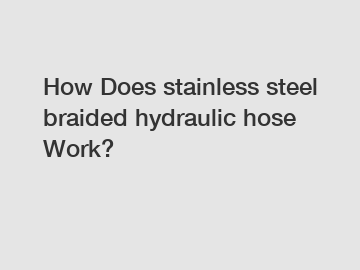
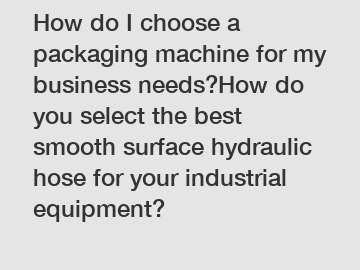
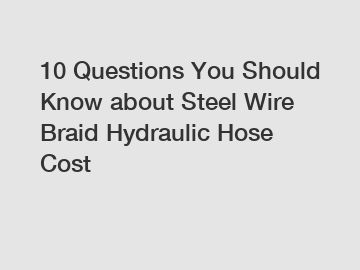
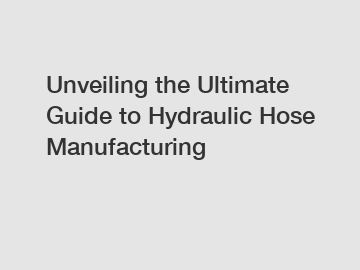
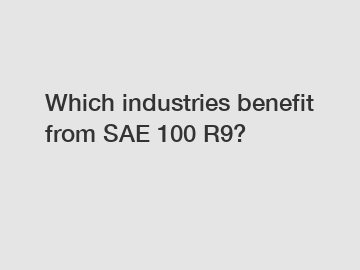
Comments
All Comments (0)